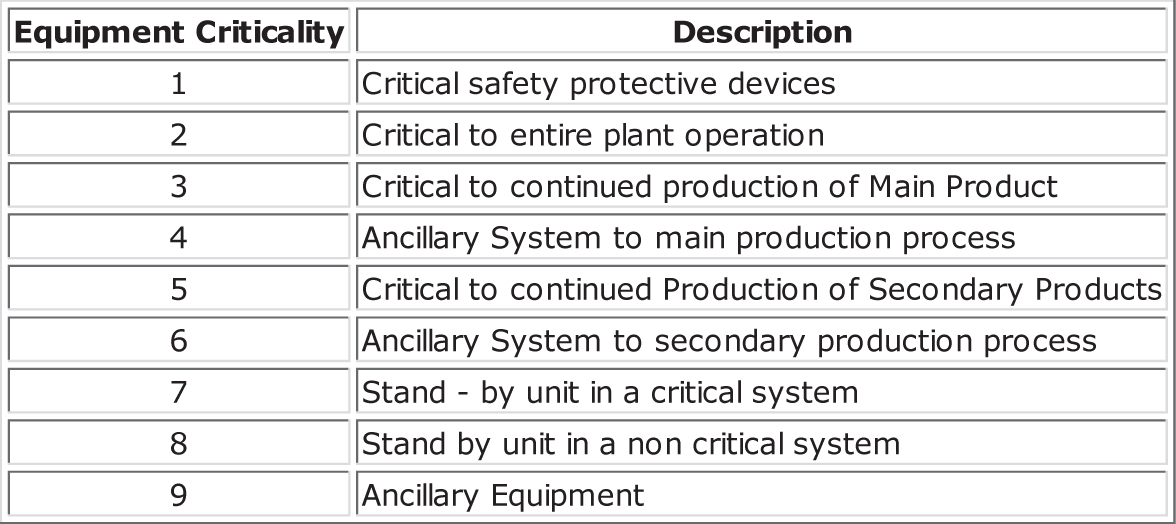Work Order Prioritization
Daryl Mather
Too many organizations neglect the benefits of a clearly defined work order prioritization system. Even when they realize the importance the focus is invariably at a department or functional level. I have seen organizations where there are up to three or more prioritization systems. None of which are inter-related.
Along with work order classification, failure coding and integration with business processes, this is one of the key determinants of a maintenance systems future operation. The drawbacks of not clearly defining the priorities, or defining them at a departmental level are many, they may include:
- Wasted maintenance man-hours on tasks of low relative importance
- Critical tasks being lost in the maintenance backlog
- Dissatisfied operations customers
- Lack of faith in the effectiveness of the maintenance delivery functions
- A disciplined method of prioritisation will eradicate tasks being done on a whim and allow work to proceed according to its true effect on the overall operations of the plant. It will also allow the maintenance delivery function to be executed in a far more effective manner. For example while works orders of higher priority will remain those that are scheduled, to achieve the capacity scheduling limits set by the organisation, there will develop a pool of lesser priority tasks that can be attended to in an unscheduled manner. Giving a base for project type works for various craft disciplines.
System Guidelines
The system will need to cater to the following requirements equally and give a universal method of coding all works orders.
- Site wide plant equipment priorities, allowing for better site wide direction of resources
- Operations requirements
- Improvement projects
Accurate prioritization covers three distinct decision-making processes, although one may be preset the others will require a degree of judgement and lastly discretion in executing work orders practically.
- Equipment Criticality
- Effect of task or work to be done
- Real world limitations on execution
Work order prioritization needs to be set by the originator of the work order.
This person is the most qualified to answer the questions of equipment criticality and effects of the task/fault noted.
Listings of major equipment and their criticalities will assist in decision-making, lower criticality items or areas will be easier to recognise.
The coding system listed below is an example of how to go about setting a “future proof” prioritisation system for work order coding. Although this can appear complex at first, once the required training, documentation and guidance are in place it becomes an integrated part of daily business processes.
The following criteria could be used to judge equipment criticality and effect of the works:
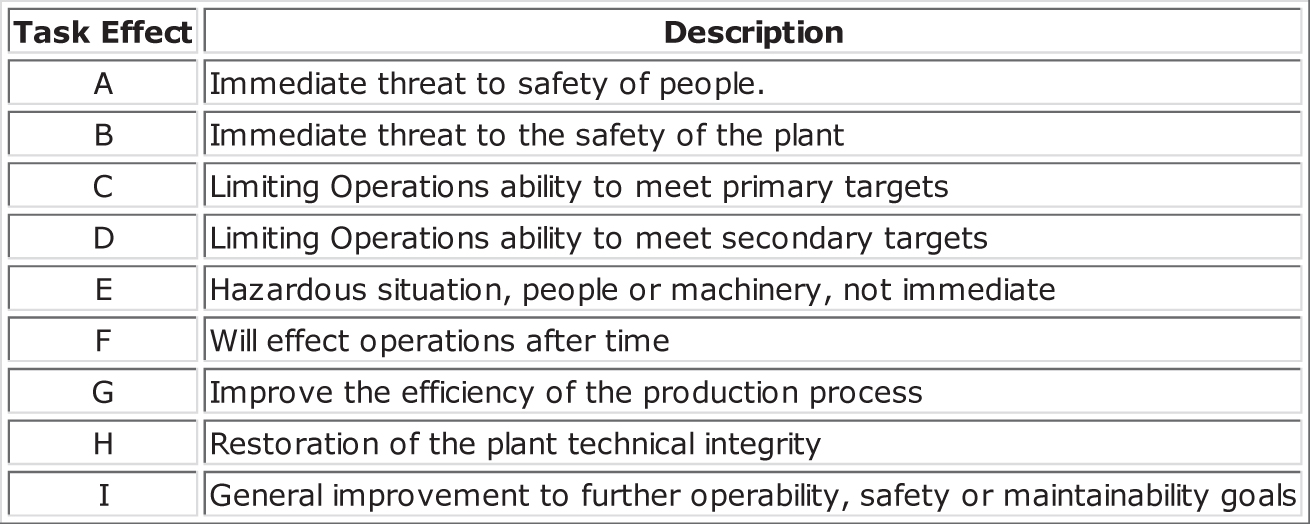
Although open to debate the timeframes for work for work orders of varying priorities can generally be grouped into 5 or less. This allows for both criticality and effect of work and is to be a cross reference for all work order assignment.
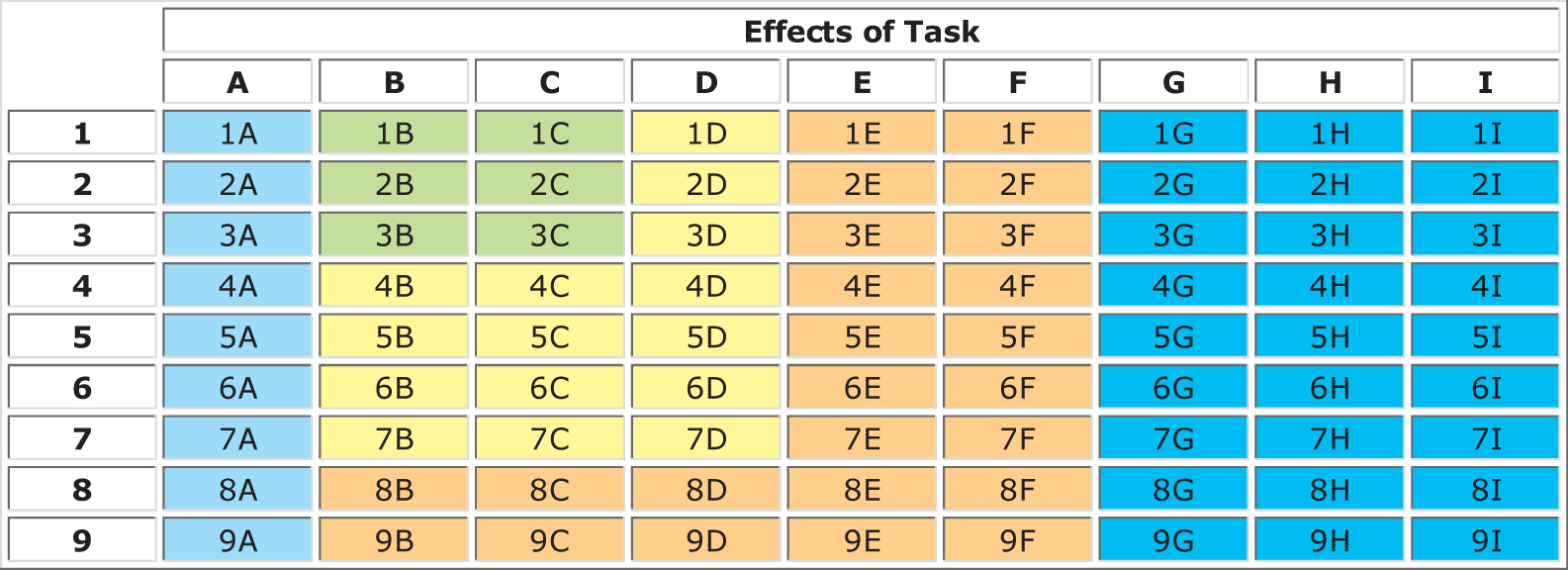
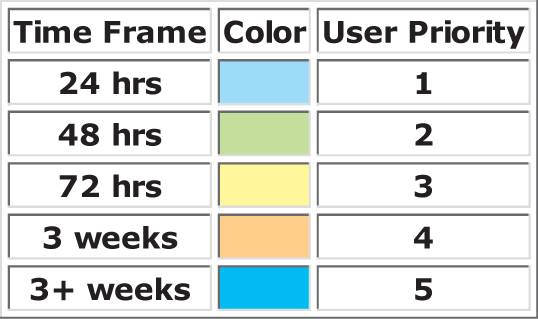
As this is only a tool to reach the timeframes represented by the coding, the effects or equipment criticality rating can be changed to represent changes in corporate policy, planning windows or equipment requirements.
Planner Priority
In executing this work there will always be difficulties. These are associated with:
- Labour shortages
- Plant availability
- Material lead times
To balance these items against the priorities of the plant as represented by the originator priorities, the planner requires a system of coding work orders to determine how they will practically be completed. The degree of flexibility needs to be built into the coding system.
This adds a third dimension to the prioritisation process and allows for the consideration of real world limitations on workflows. Including rapid changes to overall operations priority.
Although there are many recommended approaches to prioritisation, I would recommend this system as one that is suited to organisations where the maintenance function may cover various plants or ranges of equipment. As well it can easily be adapted if the organisation decides to re-structure itself. (As happens frequently)
No matter which approach is used, without it the maintenance department cannot continually carry out its function with any degree of certainty. For any further information regarding prioritising systems, or for information relating to any other basic aspect of maintenance planning or scheduling please do not hesitate to contact me directly.
Related Articles

A Planner's Tool Kit

Uptime: Fill Out Work Orders? Who's Got Time for Paperwork?

Tips for Maintenance Planning
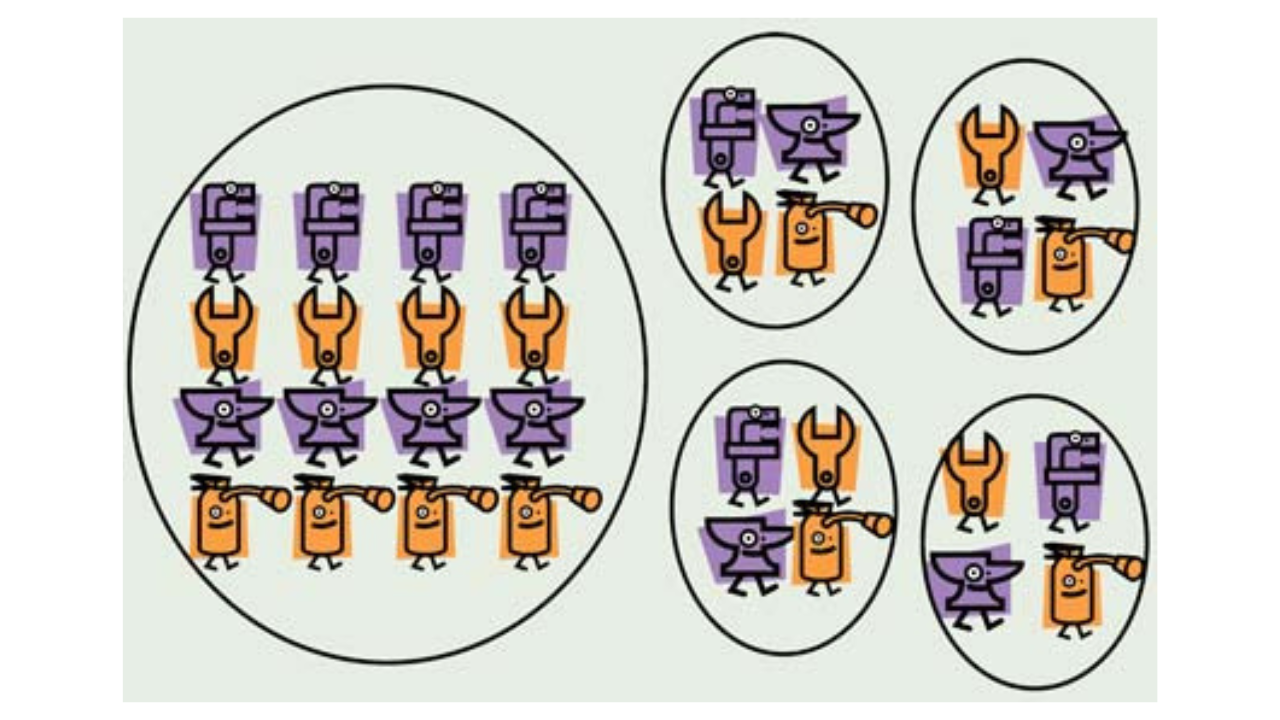
Centralized Maintenance vs. Decentralized

You Cannot Maximize Production or Reduce Costs Without the use of an Effective Planned Maintenance System


